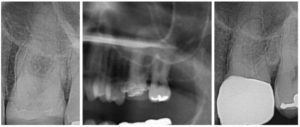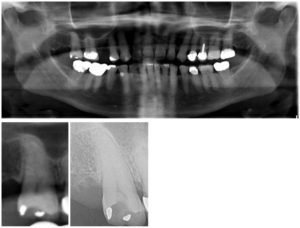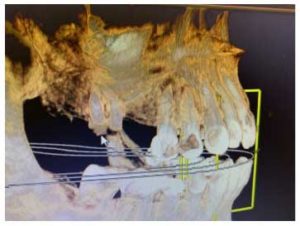30 Jan Sinus Trouble, The Box that Binds Us!
How many of you can’t contain your excitement when we ask you to fill out that medical history form? Its forever long, half of the names are difficult to pronounce, and the boxes are so tiny they are tough to even make out!
Well, there’s one box that binds us together, it is the little one that says “sinus trouble” and you better believe that almost every patient we see has checked it.
Why is this box so frequently checked and how can we help? Well, I received my copy of Decisions in Dentistry this month and there is an article in big bold letters “Maxillary Sinusitis of Odontogenic Origin.” I’ll have to dissect that title, but basically, it means sinus trouble caused by top teeth. It states that 40% of all inflamed sinuses are caused by teeth and 70% of one-sided inflamed sinuses are caused by teeth.
Wow.
What’s worse, dentists’ track records of identifying the teeth causing sinus issues haven’t historically been too great. Only 14% of these cases are picked up by dentists on routine radiographs.
Yikes, I feel like we may owe an apology as a profession.
First, let’s talk about what causes sinus trouble…
BGOHC sees many patients who have either tooth pain caused by sinuses or sinus pain caused by teeth. Why does this happen? Well, the nerves of teeth can run along that lining of sinuses. The roots of our teeth can actually penetrate up through the palatal bone in the roof of the mouth and be in the sinuses. When sinuses get dried out it can really put those nerves on edge and make teeth hurt. If there is an infection (think tooth abscess), it can really make our sinuses hurt from the pressure formed by the infection.
So, what is BGOHC doing to make sure we catch these often missed issues?
Short answer, Lots. While there are many “old school” ways to diagnose these problems, we have two really great tools. One is a panoramic radiograph that images both the teeth and sinuses, and the second is our 3D CT imager.
You can see photos below that show just how powerful these tools are. The treatment varies, but sometimes it’s as simple as clearing up a sinus infection while others may require more treatment such as root canal therapy or even a referral to an Ear, Nose, and Throat specialist.
Sometimes the sinuses checkbox can be the dental version of “crying wolf.” Yes, many of us have “sinus trouble” from time to time, but when you have tried everything in your power to feel better but the sinus trouble just won’t go away, your dentist could be a great next step.
Case 1
Patient came to clinic with a fractured tooth. I placed a crown on the tooth in order to fix the fracture. After crown was seated, patient had continued pain on biting, extreme sensitivity, and I could not numb the tooth very well. I then redid the crown in a different material at no cost to the patient due to his lingering issues. My only thought was that the crown was bad and the source of the trouble. The first view I took is what I would consider healthy with no pathology.
The second photo shows what a panoramic radiograph shows. I took this at a postoperative appointment. Above the two teeth to the right, there’s a large white circle (looks like a little cloud). This is what we call an Antral Pseudocyst, or previously known as a mucus retention cyst. Basically a large pocket of mucus collecting above the tooth. Placed the patient on an antibiotic – Z-Pak (azythromycin) and a nasally inhaled steroid and the tooth was no longer symptomatic within 3 days. Third radiograph shows the new crown I made for the patient.
Case 2
Patient presented to our clinic with a chief complaint of “My sinuses haven’t been right in years and everything hurts. I’m so frustrated!” The patient had been to her primary care physician who figured it was a sinus infection and allergies. Immediately we took a panoramic radiograph and saw the dark hole into the tooth. It was evident that a cavity had gone into the nerve of the tooth and was causing the pain. Our solution was to complete root canal therapy on the tooth. This resolved the pain and solved the sinus issue.
Case 3
Patient had “sinus headache” and had not been to the dentist in years. Took 3-D image of dentition and sinuses which revealed many broken teeth and abscesses up into the sinus cavity.




